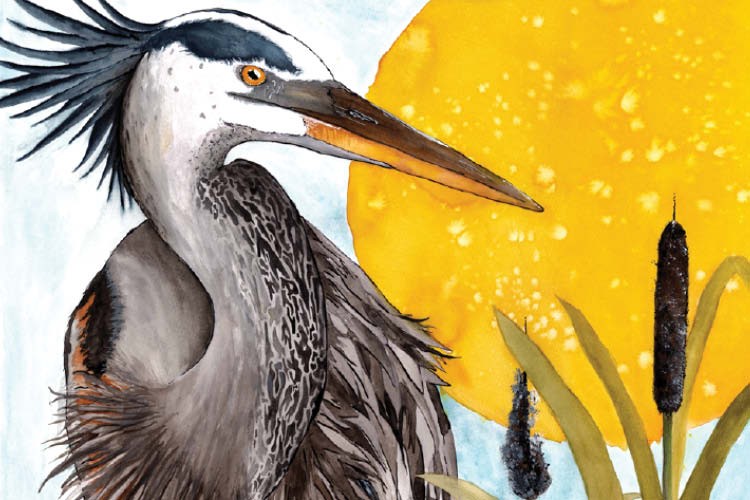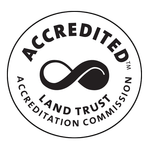News
The Unsung Hero of the Water World. By: Meghan Ciupak
A day spent in a wetland involves the sound of woodpeckers, bullfrogs, and the hum of life. Plants are growing in, around, and on the water while turtles are seen on top of every log.
Indiana was once a mecca for wetland habitat. Over 25% of the state was covered in bogs, fens, dunes, cypress swamps, marshes, and swamps. These are all different types of wetlands. Since the 1600s, human development and cultivation of crops in the state has led to depletion of wetland habitat. The Indiana Department of Environmental Management estimates that wetlands now cover less than 4% of Indiana . However, this is not exclusive to the Hoosier state. Approximately only half of the wetlands in the United States remain since the 1600s.
When wetland habitats are impacted by human activity, many of the benefits we see from wetlands become overcome with environmental consequences. Wetland benefits include clean water, wildlife, and recreational spaces. When these spaces are threatened, negative impacts are exaggerated through algae blooms, unreliable drinking water, and flooding. However, there are many people working to encourage creation, restoration, and mitigation of wetland habitats.
The collection of characteristics that the EPA defines wetlands includes: 1) water loving plants called hydrophytes, 2) organic matter rich and oxygen depleted soils called hydric soils, and, 3) surface water during some of the year. Other factors that are not regulated, but acknowledged by wetland scientists are residence time or duration that water stays in one place, microbial processes, and both nutrient and carbon inputs and processes. Together, these characteristics combine to create an abundant living space for a variety of animals including birds, amphibians, mammals, and insects. Wetlands have been a part of the landscape for centuries improving water quality, habitat, and biodiversity.
Wetlands can play a crucial role in a clean and reliable water cycle. They serve as water quality engineers by filtering pollutants and storing water. Scientists in academic, consulting, state, and federal settings agree that wetlands are known to be efficient and cost-effective solutions to water challenges across the country. One example surrounds municipal water treatment plants which require specialized workers, thousands of pounds of concrete, and constant chemical additions to create usable and non-polluted water. Wetland ecologist, Landon Vine, has been working as a consultant for V3 Companies describes wetlands as comparable to treatment facilities in that they can clean water. However, they do it in a different way. Another benefit is that wetlands have an ability to adapt and change over time with the environment. Variations between inputs, water resources pressures, and climate can then be mitigated through natural processes happening in wetlands which allow for flexibility while remaining functional. For example, wetlands can expand and deepen during the spring flood season to increase water storage capacity within a watershed which, in turn, decreases potential flooding. Spring snowmelt can transport road salts from roads into waterways. Salt can harm fish and change the chemical composition of rivers, negatively affecting the habitat. Wetlands are able to slow the transport downstream and prevent some of that road salt getting into streams. While wetlands may not be able to provide the final product of drinking water, they can lessen the load and the maintenance on water treatment plants and are essential to natural water processes.
Wetlands can provide a habitat which can lead to greater biodiversity. “In healthy wetlands there are less mosquitos because of other things eating them,” according to wetland ecologist at V3 Companies, Nathan Houk. The larger variety of animals, plants, and microbes that are in a wetland the healthier it is deemed to be. Because of this, it is also less likely to see things like mosquitos. Frogs like spring peepers, bullfrogs, and chorus frogs are common in Indiana wetlands and eat small bugs and mosquitos. Plants play a role because they create a place for tadpoles to survive into adulthood. This is just one example of the importance of biodiversity and how it can lead to a highly functioning ecosystem.
There can be uncertainty with wetlands management and operation. Just like the complexity of water treatment plants, wetlands need certain combinations of plants, water levels, and soil types to have a balanced chemical composition and to offset any anthropogenic inputs.
Sometimes certain plants survive better than others. Management and creation of wetlands involve a keen knowledge of which plants to include and the water level needed based on habitat characteristics of that location and the purpose of the wetland. Landon Vine, wetland ecologist, states that “mother nature always holds the high cards.” Wetlands are adaptable to their environment, but that does not always mean what you plant will be there in five to ten years. This is also a strength. With increasing pressure on water resources, wetlands are steadfast throughout the test of time because they are able to adapt to these changes without the need to heavily manage them.
There are many people dedicated to wetland mitigation and recovery of these powerful places through management and communication. Wetland consultants act as stewards through permitting and the building of wetlands for people, companies, and government entities. They are the translators of regulations and the architects of healthy wetland design. Landon Vine also notes that many people are not aware of the benefits that wetlands actually provide, stating “people do not even hear about these things [wetlands].” For some, there is a general lack of knowledge on the details of what wetlands actually provide.
Civil engineers may know very little about wetland rehabilitation. When asked what wetlands mean to him, Joseph Fiebig, construction engineer based in Erie, PA thinks for a moment and describes wetlands as the “the wet area that I wouldn’t really want to walk on.” Going on to say that they know it is a place full of nature, but he knows little about them.
Wetlands are amazing places with so much possibility and how does no one know about them? Wetland ecologist, Nathan Houk, points out that regulations are often the main form of knowledge for wetland management. Consultants are working with larger developers and companies rather than individuals or communities. Leading to a public knowledge gap. Stephen Carpenedo is the senior wetland specialist from Montana Department of Environmental Quality mentions that nearly 27-years of outreach programs from the Montana Wetlands Council and its partners has led to farmers and developers that value the benefits of wetlands and who try to minimize human impact on the systems as much as possible. Montana is comprised of 2.6% of their land classified as wetland with 70% of their wetlands remaining. Compared to Indiana which has less than 4% wetland cover and over 90% loss. Stephen speaks of presenting a clear message when communicating wetland importance focusing on wetlands functioning as a way to protect the economy and the community through flood control, recreation, water quality, and wildlife. Human development has led to some of these wetland losses. However, there are many programs in both states aiming to protect and restore this precious resource.
Wetlands are not crystal clear lakes people can take their family to swim in or maybe even ideal fishing habitat either. They are much more foundational than that. Wetlands provide ecosystem services that cannot be replaced - like water quality improvement and habitat for a plethora of species. Wetlands are a stepping stone to creating those wonderful fishing spots and pristine lakes. Without them, a crucial part of our water cycle is destroyed and impacts the rest of the cycle as well. There is a great opportunity for not only these people who have based their career around environmental progress, but also for each person to recognize wetland habitat and make progress to protect and restore them.
Naturalists at state parks around Indiana are key players in wetland education. Through various hands on activities and visits to wetlands, they are able to speak to the public to convey the value of wetlands. Jenna Park is a naturalist at Prophetstown State Park who organizes wetland walks through a restored fen. She states that they have “many visitors wanting to get outside to learn about our natural world.” Jenna explains wetland abilities to filter nutrients and prevent flooding to visitors. By using a sponge, she is able to demonstrate wetland function through its ability to hold water. This water represents nutrients, chemicals, biodiversity, and habitat that is held in wetlands. When the sponge is squeezed, it represents loss of those characteristics through things like development and draining of wetlands. Marie Laudeman is a naturalist at Indiana Dunes State Park who interacts with visitors in a similar way. Her program focuses on the interconnectedness of our natural systems. How wetlands play a role in water quality and wildlife habitat, but they also impact humans as well. Reinforcing reasons for wetlands and why people should care about them. People who visit these parks are eager to learn about wetlands and their role in our world.
Wetlands are ecosystems with superpowers that often go forgotten. Indiana once teeming with these shallow, plant and frog filled waterscapes, now converted to agricultural fields or urban development. Their ability to create habitat and improve water quality are just a few of the capabilities of these ecosystems. They also benefit our way of life. Environmental consultants, naturalists, and state ecologists are currently the primary wetland advocates. Consultant practices place value on wetlands according to needs and wants of that company the same can be done for the general public. Wetlands can not only provide biological benefits, but they can also provide recreational space to enjoy hikes, bird watching, and providing green spaces for all.



